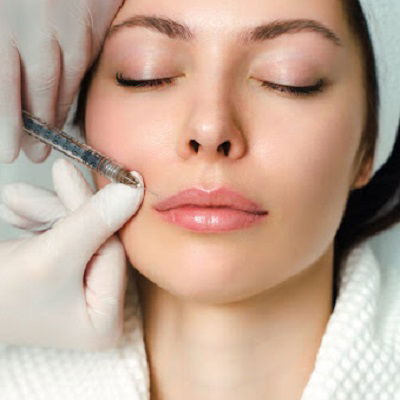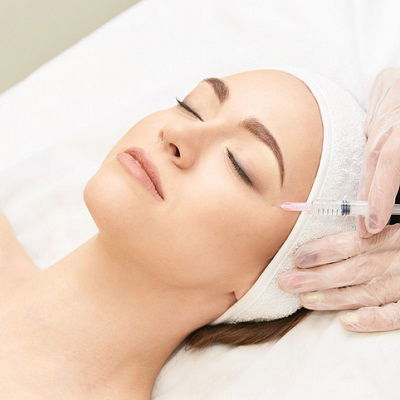The Science Behind Dysport: How It Works to Reduce Wrinkles
Introduction
Wrinkles are a natural part of the aging process, but many individuals seek ways to minimize their appearance to maintain youthful, smooth skin. Among the most popular treatments for reducing wrinkles are botulinum toxin-based injectables, with Dysport being one of the leading options. While botulinum toxin treatments are widely used, there is still much curiosity about how these products work and what makes them effective. In this article, we will delve into the science behind Dysport Injections, examining how it works to reduce wrinkles, its mechanism of action, and the factors that contribute to its effectiveness as a wrinkle-reducing treatment.

Understanding the Basics: What is Dysport?
Dysport is a type of botulinum toxin type A, a neurotoxin produced by the bacterium Clostridium botulinum. Botulinum toxin is most famous for its ability to temporarily paralyze muscles, which is the key to its effectiveness in reducing wrinkles. Dysport, like other botulinum toxin-based products, is injected into specific areas of the face to temporarily relax the muscles responsible for causing wrinkles, resulting in a smoother, more youthful appearance.Though Dysport shares the same active ingredient as Botox, its formulation and spread patterns differentiate it. These differences contribute to the distinct benefits and potential side effects associated with each product. Dysport is typically used to treat dynamic wrinkles, which are the lines and folds that form as a result of repetitive facial muscle movements, such as those caused by frowning, squinting, or smiling.
The Mechanism of Action: How Dysport Works at the Cellular Level
To understand how Dysport works to reduce wrinkles, it's important to delve into the underlying biological processes that occur at the cellular level. Dysport, like other botulinum toxin injectables, works by blocking the communication between nerve cells and muscles.
Step 1: The Role of Acetylcholine in Muscle Contraction
At the heart of muscle contraction lies acetylcholine, a neurotransmitter that plays a critical role in muscle movement. When a nerve cell sends an electrical signal to a muscle, acetylcholine is released from the nerve endings into the synaptic cleft (the small gap between the nerve and muscle cells). Acetylcholine then binds to receptors on the muscle cells, stimulating them to contract. This process is essential for muscle movement.
Step 2: Dysport Inhibition of Acetylcholine Release
Dysport functions by inhibiting the release of acetylcholine at the neuromuscular junction, the site where the nerve and muscle meet. After being injected into the targeted muscle, Dysport binds to specific receptors on the nerve endings, preventing the release of acetylcholine. Without acetylcholine being released into the synaptic cleft, the muscle cannot receive the signal to contract. As a result, the muscle is temporarily paralyzed or "relaxed."This temporary muscle paralysis leads to a reduction in muscle activity, which is particularly useful for treating wrinkles caused by repetitive facial movements. When the underlying muscles are unable to contract, the overlying skin smooths out, leading to a noticeable reduction in the appearance of wrinkles and fine lines.
Step 3: The Temporary Nature of Dysport’s Effects
The effects of Dysport are temporary because the body gradually breaks down and absorbs the botulinum toxin over time. The muscle's ability to contract slowly returns as the nerve endings regenerate and acetylcholine is once again able to be released. Typically, the effects of Dysport last between three to six months, after which the treatment may need to be repeated to maintain the smooth, wrinkle-free appearance.
Dysport vs. Other Botulinum Toxin Injections
Dysport is not the only botulinum toxin product on the market; others, such as Botox and Xeomin, are also widely used for wrinkle reduction. Though they all share the same active ingredient (botulinum toxin type A), there are key differences between these products that influence their performance and suitability for different individuals.
Differences in Molecular Structure and Diffusion
One of the key differences between Dysport and other botulinum toxin injectables lies in the molecular structure of the product. Dysport molecules are smaller than those in Botox, which allows the product to diffuse more easily in the treatment area. This characteristic can be advantageous in certain cases, such as treating larger areas, as it allows for a more even distribution of the product. However, it can also increase the risk of the product spreading beyond the targeted muscle, potentially leading to unintended effects.Botox, on the other hand, has larger molecules and tends to remain more localized at the injection site. This property makes Botox a better option for treating smaller, more specific areas, such as crow’s feet or frown lines between the eyebrows. Xeomin, another botulinum toxin product, is purified to remove accessory proteins, which some believe makes it less likely to cause resistance to the treatment over time.
Onset of Results
Another important difference between Dysport and other botulinum toxin products is the speed at which results are visible. Dysport tends to show its effects faster than Botox, with noticeable results often appearing within 2–3 days of the injection. Botox, in contrast, may take 5–7 days to show full effects. This rapid onset makes Dysport a popular choice for individuals looking for quick results.
Duration of Effectiveness
While all botulinum toxin products offer temporary wrinkle reduction, the duration of their effects can vary. Botox typically lasts around 3–4 months, while Dysport may last slightly longer, up to 5–6 months, depending on the individual. This difference may be attributed to variations in the diffusion properties of the products, as well as individual factors like the size and strength of the muscles being treated.
Factors That Influence Dysport’s Effectiveness
Several factors can influence the effectiveness of Dysport as a wrinkle-reducing treatment. These factors range from the technique used during injection to the individual’s physiology.
1. Injection Technique and Practitioner Experience
The skill of the practitioner performing the injections plays a crucial role in the success of Dysport treatment. Injecting the product into the correct muscle at the right depth and angle is essential for achieving the desired results. An experienced practitioner will have a thorough understanding of facial anatomy and the unique patterns of muscle movement that contribute to wrinkle formation. This expertise ensures that Dysport is injected precisely, minimizing the risk of complications such as unintended muscle weakness or asymmetry.
2. Muscle Strength and Size
The size and strength of the muscles being treated also affect how Dysport works. Stronger or larger muscles may require higher doses of Dysport to achieve the desired effect, while smaller or less active muscles may respond to lower doses. A customized approach based on the individual’s facial anatomy and muscle activity is necessary for achieving optimal results.
3. Age and Skin Condition
Age and skin condition can also impact how effectively Dysport reduces wrinkles. As individuals age, their skin loses elasticity, and facial muscles may become weaker, requiring more frequent treatments to maintain results. Additionally, the depth and type of wrinkles can influence the success of Dysport. Dynamic wrinkles, caused by repetitive muscle movement, tend to respond better to botulinum toxin injections compared to static wrinkles, which are present even when the muscles are at rest.
4. Product Quality and Storage
The quality of the Dysport product and the way it is stored can also affect its effectiveness. Dysport must be carefully stored and handled to maintain its potency. If the product is exposed to extreme temperatures or improperly stored, it may lose its effectiveness, leading to less satisfactory results.

Safety and Side Effects of Dysport
Dysport is generally considered safe when administered by a trained healthcare provider. However, as with any medical treatment, there are potential side effects. The most common side effects include localized pain, redness, or swelling at the injection site. Other potential side effects, though rare, include drooping eyelids, headaches, and nausea. These side effects are typically temporary and resolve on their own within a few days to weeks.Severe complications, such as difficulty swallowing or breathing, are extremely rare but can occur if the toxin spreads to areas beyond the intended treatment site. To minimize these risks, it is essential to seek treatment from a qualified professional with experience in administering botulinum toxin injections.
Conclusion
Dysport is a highly effective treatment for reducing wrinkles caused by repetitive facial muscle movements. By temporarily blocking the release of acetylcholine, Dysport prevents muscle contractions, leading to smoother, younger-looking skin. Though Dysport shares the same active ingredient as other botulinum toxin injectables, it differs in terms of molecular structure, diffusion, onset, and duration of effect, making it suitable for different individuals and treatment areas.The effectiveness of Dysport depends on various factors, including injection technique, the individual’s muscle strength and size, and the condition of their skin. As with any medical procedure, it is important to consult a qualified practitioner to ensure the best possible results and minimize risks. When performed correctly, Dysport can provide a safe and effective solution for those looking to reduce the appearance of wrinkles and restore a more youthful look.
